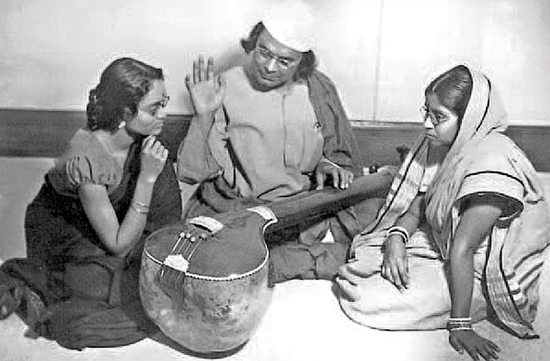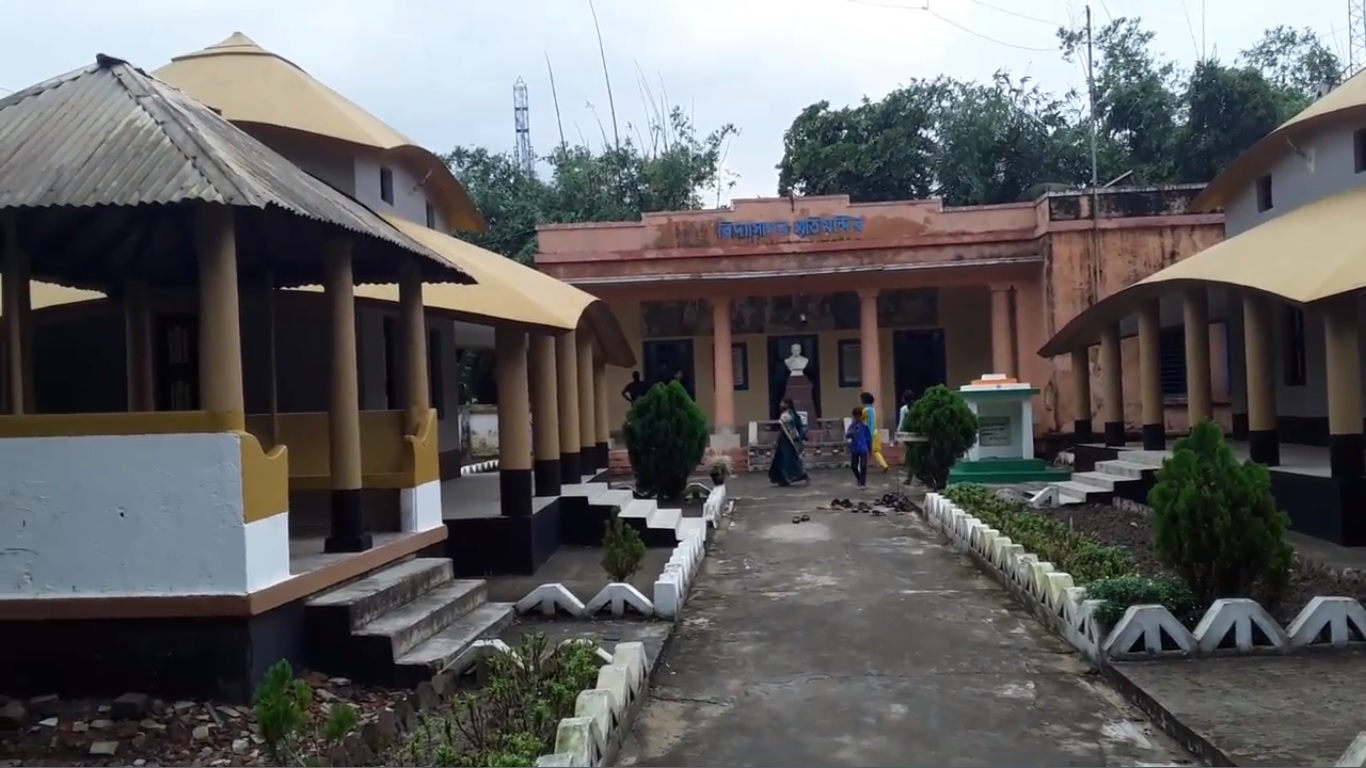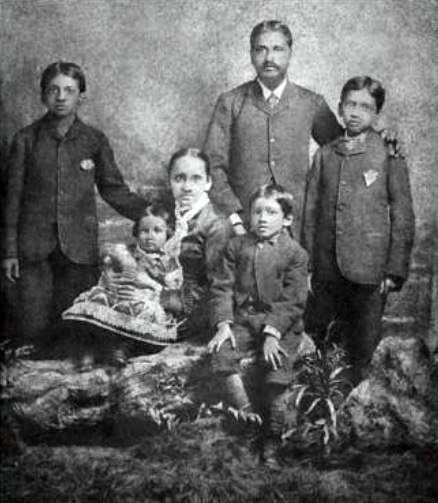|
Mother's Wax Museum
Mother's Wax Museum is a wax museum located in Action Area – II of New Town, Kolkata, India on the 5th and 6th floors of the West Bengal Housing Infrastructure Development Corporation building. Established in November 2014, it contains wax statues of more than 50 personalities, including statues of Bollywood actors Amitabh Bachchan, Shah Rukh Khan and Salman Khan. The museum has been named after Mother Teresa. Featured wax sculptures Sports * Lionel Messi * Diego Maradona * Sourav Ganguly * Kapil Dev * Sachin Tendulkar * Virat Kohli Political * B. R. Ambedkar * Netaji Subhas Chandra Bose * Mohandas Karamchand Gandhi * Pranab Mukherjee * Sheikh Mujibur Rahman Spirituality * Ramakrishna * Sarada Devi * Swami Vivekananda * Sri Aurobindo Social * Raja Rammohan Roy * Sister Nivedita (presently removed) * Mother Teresa Literature * Rabindranath Tagore * Iswar Chandra Vidyasagar * Sarat Chandra Chatterjee * Kazi Nazrul Islam Science * Jagadish Chandra Bose * Satyendranath Bos ... [...More Info...] [...Related Items...] OR: [Wikipedia] [Google] [Baidu] |
New Town, Kolkata
New Town is a planned satellite city of Kolkata, India. It comes under North 24 Parganas district in the Indian state of West Bengal. It is close to Kolkata and covered by New Town Kolkata Development Authority (NKDA). HIDCO planned developing infrastructure like - roads, drains, sewerage line, water supply lines, major embellishment works and executed constructions like - buildings, projects, parks, museum, subways, over-bridges in New Town. This new information technology and residential hub is being developed on the north-eastern fringes of Kolkata. The area mainly consisted of huge acres of cultivable lands and water bodies, which was acquired and developed in a planned manner. The process of investing in residential and industrial facilities and infrastructural development of the area was mainly started under the leadership of the then Chief Minister of West Bengal, Jyoti Basu in the late 1990s. The master plan envisions a township which is at least three times bigger th ... [...More Info...] [...Related Items...] OR: [Wikipedia] [Google] [Baidu] |
Sheikh Mujibur Rahman
Sheikh Mujibur Rahman ( bn, শেখ মুজিবুর রহমান; 17 March 1920 – 15 August 1975), often shortened as Sheikh Mujib or Mujib and widely known as Bangabandhu (meaning ''Friend of Bengal''), was a Bengalis, Bengali politician, Member of parliament, parliamentarian and the founding leader of the People's Republic of Bangladesh. He first served as the titular President of Bangladesh, President of the Provisional Government of Bangladesh between April 1971 and January 1972. He then served as Prime Minister of Bangladesh from the Awami League between January 1972 and January 1975. He finally served as President again during BAKSAL from January 1975 till his assassination in August 1975. In 2011, the 15th constitutional amendment in Bangladesh referred to Sheikh Mujib as the Father of the Nation who Proclamation of Bangladeshi Independence, declared independence; these references were enshrined in the fifth, sixth, and seventh schedules of the constitu ... [...More Info...] [...Related Items...] OR: [Wikipedia] [Google] [Baidu] |
Albert Einstein
Albert Einstein ( ; ; 14 March 1879 – 18 April 1955) was a German-born theoretical physicist, widely acknowledged to be one of the greatest and most influential physicists of all time. Einstein is best known for developing the theory of relativity, but he also made important contributions to the development of the theory of quantum mechanics. Relativity and quantum mechanics are the two pillars of modern physics. His mass–energy equivalence formula , which arises from relativity theory, has been dubbed "the world's most famous equation". His work is also known for its influence on the philosophy of science. He received the 1921 Nobel Prize in Physics "for his services to theoretical physics, and especially for his discovery of the law of the photoelectric effect", a pivotal step in the development of quantum theory. His intellectual achievements and originality resulted in "Einstein" becoming synonymous with "genius". In 1905, a year sometimes described as his ' ... [...More Info...] [...Related Items...] OR: [Wikipedia] [Google] [Baidu] |
Satyendranath Bose
Satyendra Nath Bose (; 1 January 1894 – 4 February 1974) was a Bengali mathematician and physicist specializing in theoretical physics. He is best known for his work on quantum mechanics in the early 1920s, in developing the foundation for Bose statistics and the theory of the Bose condensate. A Fellow of the Royal Society, he was awarded India's second highest civilian award, the Padma Vibhushan, in 1954 by the Government of India. The class of particles that obey Bose statistics, bosons, was named after Bose by Paul Dirac. A polymath, he had a wide range of interests in varied fields, including physics, mathematics, chemistry, biology, mineralogy, philosophy, arts, literature, and music. He served on many research and development committees in sovereign India. Early life Bose was born in Calcutta (now Kolkata), the eldest of seven children in a Bengali Kayastha family. He was the only son, with six sisters after him. His ancestral home was in the village Bara Jagulia, ... [...More Info...] [...Related Items...] OR: [Wikipedia] [Google] [Baidu] |
Jagadish Chandra Bose
Sir Jagadish Chandra Bose (;, ; 30 November 1858 – 23 November 1937) was a biologist, physicist, Botany, botanist and an early writer of science fiction. He was a pioneer in the investigation of radio microwave optics, made significant contributions to botany, and was a major force behind the expansion of experimental science on the Indian subcontinent. Bose is considered the father of Bengali science fiction. He invented the crescograph, a device for measuring the growth of plants. Bose (crater), A crater on the moon was named in his honour. He founded Bose Institute, a premier research institute in India and also one of its oldest. Established in 1917, the institute was the first interdisciplinary research centre in Asia. He served as the Director of Bose Institute from its inception until his death. Born in Munshiganj, Bengal Presidency, during British India, British governance of India (now in Bangladesh), Bose graduated from St. Xavier's College, Calcutta (now Kolkata, W ... [...More Info...] [...Related Items...] OR: [Wikipedia] [Google] [Baidu] |
Kazi Nazrul Islam
Kazi Nazrul Islam ( bn, কাজী নজরুল ইসলাম, ; 24 May 1899 – 29 August 1976) was a Bengali poet, Bengali literature, writer, Bangladeshi music, musician, and is the national poet of Bangladesh. Nazrul is regarded as one of the greatest poets in Bengali literature. Popularly known as Nazrul, he produced a Complete Works of Kazi Nazrul Islam, large body of poetry, music, messages, novels, stories, etc. with themes that included equality, justice, anti-imperialism, humanity, rebellion against oppression and religious devotion. Nazrul's activism for political and social justice as well as writing a poem titled as "Bidrohī", meaning "the rebel" in Bengali, earned him the title of "Bidrohī Kôbi" (''Rebel Poet''). His compositions form the avant-garde music genre of Nazrul Geeti, Nazrul Gīti (''Music of Nazrul''). Born into a Bengali Muslim Qadi#IndoPak Region, Kazi family hailing from Bardhaman district, Burdwan district in Bengal Presidency (now in West Be ... [...More Info...] [...Related Items...] OR: [Wikipedia] [Google] [Baidu] |
Sarat Chandra Chatterjee
Sarat Chandra Chattopadhyay, alternatively spelt as Sarat Chandra Chatterjee ( bn, শরৎচন্দ্র চট্টোপাধ্যায়; 15 September 1876 or ৩১ শে ভাদ্র ১২৮৩ বঙ্গাব্দ – 16 January 1938), was a Bengali novelist and short story writer of the early 20th century. Most of his works deal with the lifestyle, tragedy and struggle of the village people and the contemporary social practices that prevailed in Bengal. He remains the most popular, translated, and adapted Indian author of all time. Early life Sarat Chandra Chattopadhyay was born on 15 September 1876 (৩১ শে ভাদ্র, ১২৮৩ বঙ্গাব্দ), in a Bengali Brahmin family in Debanandapur, a small village in Hooghly, West Bengal. Sarat Chandra spent most of his childhood at his maternal uncle's home in Bhagalpur, Bihar. Chandra spent his childhood in extreme poverty. Chandra was a daring, adventure-loving boy. His educa ... [...More Info...] [...Related Items...] OR: [Wikipedia] [Google] [Baidu] |
Iswar Chandra Vidyasagar
Ishwar Chandra Vidyasagar CIE ( bn, ঈশ্বর চন্দ্র বিদ্যাসাগর; 26 September 1820 – 29 July 1891), born Ishwar Chandra Bandyopadhyay, was an Indian educator and social reformer of the nineteenth century. His efforts to simplify and modernise Bengali prose were significant. He also rationalised and simplified the Bengali alphabet and type, which had remained unchanged since Charles Wilkins and Panchanan Karmakar had cut the first (wooden) Bengali type in 1780. He was the most prominent campaigner for Hindu widow remarriage, petitioning the Legislative Council despite severe opposition, including a counter petition (by Radhakanta Deb and the Dharma Sabha) which had nearly four times as many signatures. Even though widow remarriage was considered a flagrant breach of Hindu customs and was staunchly opposed, Lord Dalhousie personally finalised the bill and the ''Hindu Widows' Remarriage Act'', ''1856'' was passed . Against child marriage,e ... [...More Info...] [...Related Items...] OR: [Wikipedia] [Google] [Baidu] |
Rabindranath Tagore
Rabindranath Tagore (; bn, রবীন্দ্রনাথ ঠাকুর; 7 May 1861 – 7 August 1941) was a Bengali polymath who worked as a poet, writer, playwright, composer, philosopher, social reformer and painter. He reshaped Bengali literature and music as well as Indian art with Contextual Modernism in the late 19th and early 20th centuries. Author of the "profoundly sensitive, fresh and beautiful" poetry of ''Gitanjali'', he became in 1913 the first non-European and the first lyricist to win the Nobel Prize in Literature. Tagore's poetic songs were viewed as spiritual and mercurial; however, his "elegant prose and magical poetry" remain largely unknown outside Bengal. He was a fellow of the Royal Asiatic Society. Referred to as "the Bard of Bengal", Tagore was known by sobriquets: Gurudev, Kobiguru, Biswakobi. A Bengali Brahmin from Calcutta with ancestral gentry roots in Burdwan district* * * and Jessore, Tagore wrote poetry as an eight-yea ... [...More Info...] [...Related Items...] OR: [Wikipedia] [Google] [Baidu] |
Sister Nivedita
Sister Nivedita ( born Margaret Elizabeth Noble; 28 October 1867 – 13 October 1911) was an Irish teacher, author, social activist, school founder and disciple of Swami Vivekananda. She spent her childhood and early youth in Ireland. She was engaged to marry a Welsh youth, but he died soon after their engagement. Sister Nivedita met Swami Vivekananda in 1895 in London and travelled to Calcutta (present-day Kolkata), India in 1898. Swami Vivekananda gave her the name ''Nivedita'' (meaning "Dedicated to God") when he initiated her into the vow of ''Brahmacharya'' on 25 March 1898. In November 1898, she opened a girls' school in the Bagbazar area of North Calcutta. She wanted to educate girls who were deprived of even basic education. During the plague epidemic in Calcutta in 1899, Nivedita nursed and took care of the poor patients. Nivedita had close associations with the newly established Ramakrishna Mission. Because of her active contribution in the field of Indian Nationali ... [...More Info...] [...Related Items...] OR: [Wikipedia] [Google] [Baidu] |
Raja Rammohan Roy
Raja Ram Mohan Roy ( bn, রামমোহন রায়; 22 May 1772 – 27 September 1833) was an Indian reformer who was one of the founders of the Brahmo Sabha in 1828, the precursor of the Brahmo Samaj, a social-religious reform movement in the Indian subcontinent. He was given the title of Raja by Akbar II, the Mughal emperor. His influence was apparent in the fields of politics, public administration, education and religion. He was known for his efforts to abolish the practices of sati and child marriage. Roy is considered to be the "Father of the Bengal Renaissance" by many historians. In 2004, Roy was ranked number 10 in BBC's poll of the Greatest Bengali of All Time. Early life and education (till 1796) Ram Mohan Roy was born in Radhanagar, Hooghly District, Bengal Presidency. His great grandfather Krishnakanta Bandyopadhyay was a Rarhi Kulin (noble) Brahmin. Among Kulin Brahmins descendants of the six families of Brahmins imported from Kannauj by Ballal ... [...More Info...] [...Related Items...] OR: [Wikipedia] [Google] [Baidu] |
Sri Aurobindo
Sri Aurobindo (born Aurobindo Ghose; 15 August 1872 – 5 December 1950) was an Indian philosopher, yogi, maharishi, poet, and Indian nationalist. He was also a journalist, editing newspapers such as ''Vande Mataram''. He joined the Indian movement for independence from British colonial rule, until 1910 was one of its influential leaders, and then became a spiritual reformer, introducing his visions on human progress and spiritual evolution. Aurobindo studied for the Indian Civil Service at King's College, Cambridge, England. After returning to India he took up various civil service works under the Maharaja of the Princely state of Baroda and became increasingly involved in nationalist politics in the Indian National Congress and the nascent revolutionary movement in Bengal with the Anushilan Samiti. He was arrested in the aftermath of a number of bombings linked to his organization in a public trial where he faced charges of treason for Alipore Conspiracy. However, ... [...More Info...] [...Related Items...] OR: [Wikipedia] [Google] [Baidu] |

.jpg)







